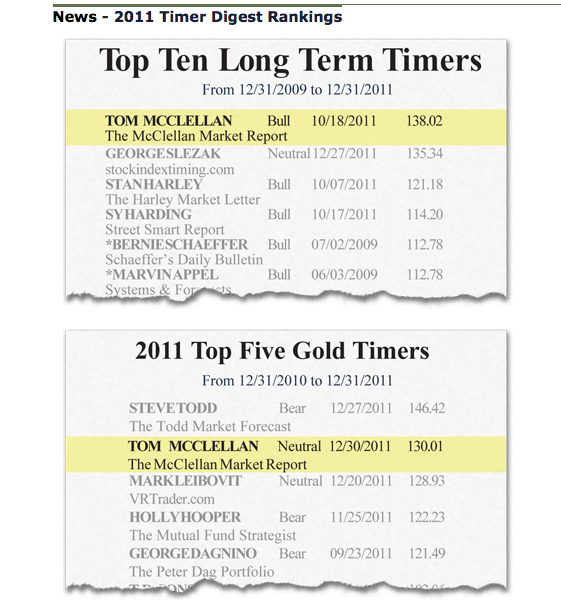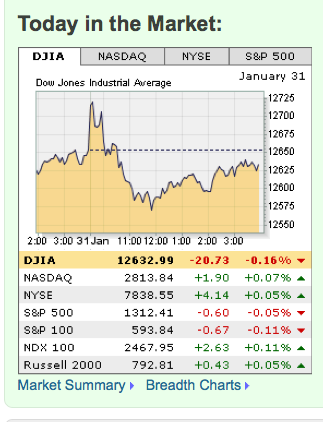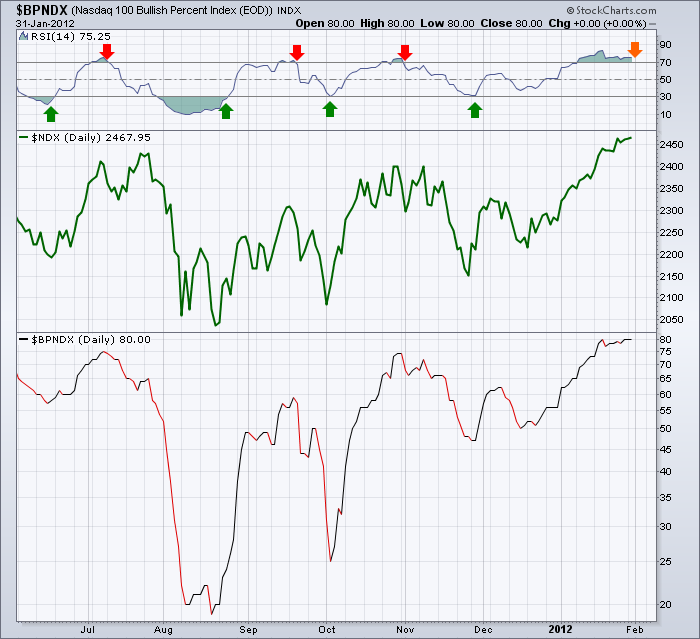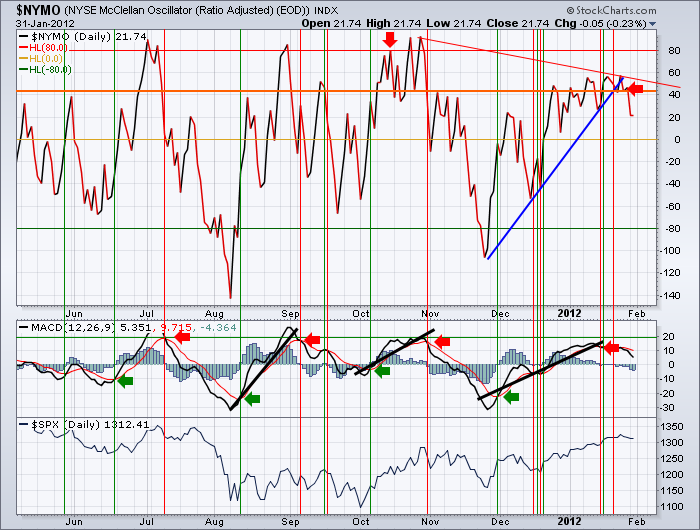The Never ending question of timing the market is a technicians dream. Knowing when you have hit a high, knowing when you have hit a low. Or knowing your on the wrong side of the trade because the Fed just stepped in. Last week the Fed melted the banks and inflated the Gold bulls. Meanwhile the ECB is inflating the banks. So Technical analysis works well, but a major fed announcement just a week before a scheduled fed meetings, or announcing changes in policy while New York is on lunch keeps reminding us that a new piece of data can change expectations.
One of the best at market momentum is Tom McLellan. I recently visited mcoscillator.com .. This is the home of McLellan Oscillators.
I was ultra impressed with Tom's ability to find tops and bottoms in the market. I think you will be as well. Check out these results.
I googled Tom DeMark and he was awarded a timing award in London last year for the same type of work.
Ed Carlson's Investment Book of 2011- George Lindsay and the art of Technical Analysis is also focused on finding the major turning points in the market.
This is the holy grail of a technicians work and also defines one of the major difference in technical vs. fundamental analysts. So can we find any rhythm to this?
Well, Stockcharts offers some great tools to help us. I have found a few that work great. The biggest problem is they don't work 100% of the time.
Of course you have the breadth link we have on the home page of stockcharts.com
Just click on the Breadth Chart ^ link.
Also you have the BP Indexes. I find you need to see a group of them breaking down at the same time. I like to watch the RSI fall out of overbought (below 70) on all the major indexes like the Nasdaq 100- NDX, SPX,Financials, Energy, Industrials.
However, I like to use other indicators as well. I like to put things like the MACD on the chart of the $NYMO. You can see the red / green vertical lines on the MACD histogram do a reasonable job.
So my system currently works ok when the changes are harsh and quick, but it doesn't work as well when we get extended slow meltups as an example. So I have more work to do. The Bottom line is my signal says stay out of the market currently. Interestingly, the systems that count distribution days are nowhere near their limits.
So I might need to incorporate that in my system to help in these extended markets. My system is recorded at the end of the day. So the Fed announcement of November 28th was not something I was aware of before. But it did give a turn signal on the Monday. However the October 4th low, the October 27th top gave me great signals and warned me to expect a turn any day. The Recent Fed day also surged just enough to flip the system on Wednesday. By Thursday night it was back to a sell signal.
Anyway, I think it is encouraging to find a method that helps you get defensive near tops and get bullish when everyone seems afraid of the market. Will it be right every time? Never. But as you can tell, Tom McLellan and Tom DeMark have developed systems that work really well. As a technician, I challenge you to build your own methodologies. The most important part is to keep you from going long when the market is ready to flip negative. It can also help you exit your short position in a timely fashion.
Think about using triggers like the put call ratio ($CPCE), $NYAD, $NYMO, $VIX and build out from there. Keep expanding your toolbox to help you. My phone rang the day the Fed announced on Wednesday and the caller wanted to get fully invested. In the meantime, my system was recording a posture of more lows ahead. It might help you stay less emotional in your trading.
Let me know if this commentary helped you at all, or if you have other indicators that tell you when to change posture on a swing trading basis.
Good Trading,
Greg Schnell, CMT











